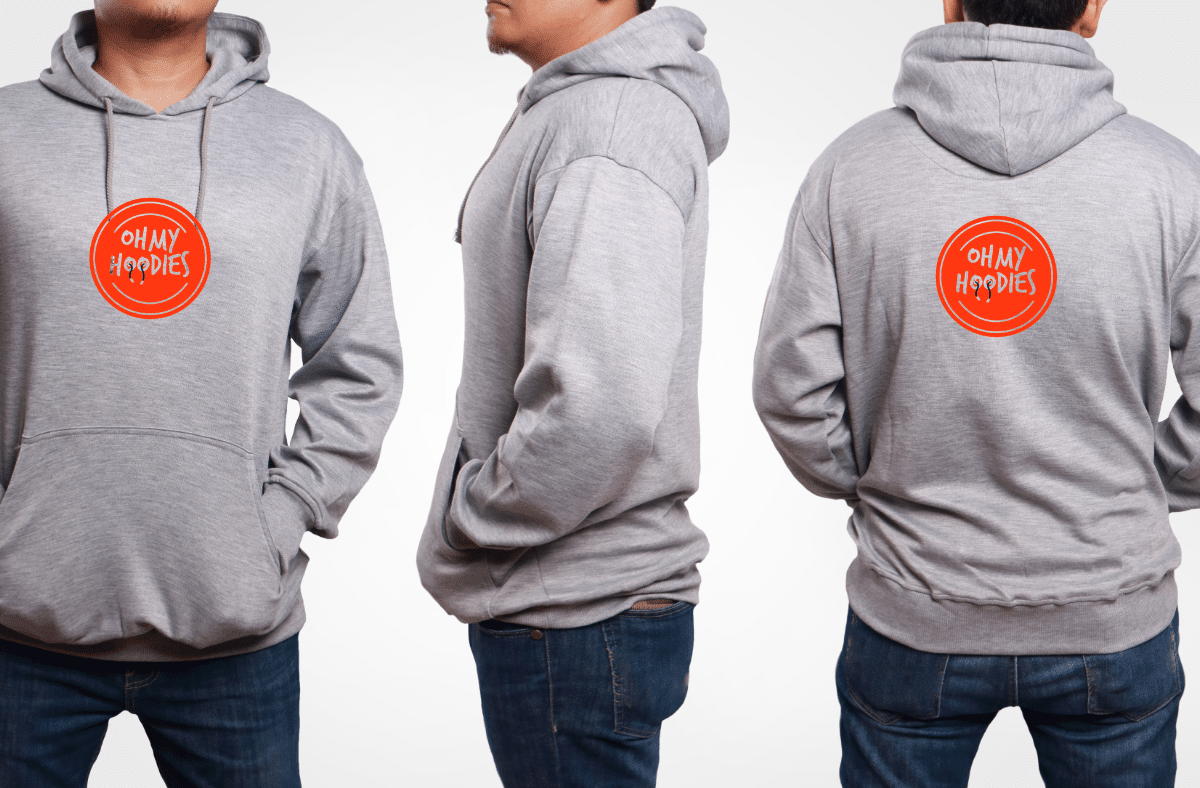In the grand tapestry of fashion, hoodies have weaved their way to become an essential thread. Sharp in their simplicity, they are the embodiment of modern couture’s utilitarian leanings. But have you ever wondered how to make a hoodie? To answer this intriguing question, let’s embark on a journey from idea to execution, where every seam tells a story.
The Genesis of a Hoodie
The inception of a hoodie begins with an idea. The designer carefully considers comfort, warmth and style, balancing them to create the perfect garment. Conceptualizing is an integral part of the process, where fabric choice, color selection, and hoodie design take shape. Understanding the wearer’s needs helps anticipate the right blend of fibers, hues, and embellishments. For instance, if the hoodie is designed for a streetwear enthusiast, a chunky, oversized silhouette in muted tones might be the path to follow.
Picking the Perfect Fabric
The heart of a hoodie lies in its fabric. Cotton, polyester, fleece, or a mix of these are commonly used. Each material has its pros and cons. Cotton boasts softness and breathability, but can shrink over time. Polyester offers durability and resistance to wrinkles but can cause discomfort during intense physical activity. Fleece provides unmatched warmth but pills easily. Sometimes, a blend of cotton and polyester is used to marry the best of both worlds.
The Cut That Flatters
Creating the right pattern is key when learning how to make a hoodie. The pattern assures a flattering fit and accentuates the wearer’s unique physique. It consists of different sections like the body, sleeves, pocket, cuffs, hood, and waistband. All these parts must be carefully measured, cut, and assembled to ensure a seamless design.
Assembling Your Masterpiece
Once the patterns are cut, begin the process of sewing them together. Start by connecting the front and back body pieces at the shoulders. Attach the sleeves, followed by the side seams of the body and the sleeves. Afterward, sew the cuffs and waistband in place.
Creating the hood is a task which requires finesse. Connect the two hood pieces you’ve cut along the curve, then attach the hood to the neckline of the body. Finally, sew the pockets in the desired position, making sure they align perfectly.
Do remember, a sewing machine suitable for the chosen fabric is a must. A twin needle will give your hemlines a professional finish.
Add a Personal Touch
Adding personal touches can transform a simple hoodie into a statement piece. An embroidered logo or a custom print can lend uniqueness. Even embellishments like studs or sequins can add flair to your creation. With countless possibilities to make the hoodie your own, the real challenge lies in choosing one that truly speaks your style.
Finishing Your Creation
The final step in understanding how to make a hoodie is ensuring a clean finish. Inspect your hoodie for loose threads and trim them. Make sure the hems are even. If necessary, iron your hoodie for a crisp look.
By following these steps, you can craft a hoodie that not only envelops in warmth but also exemplifies your style. Remember, the journey to creating a hoodie is a testimony to your creativity and patience. Each stitch is a step towards fashioning not just a garment, but a piece of art that symbolizes your sartorial prowess.
Undeniably, a well-tailored hoodie is a wardrobe essential. With this guide, you can now channel your inner designer to create one that stands out. Whether it’s snuggling up in a soft fleece hoodie on a chilly night or rocking a street-style look in an oversized cotton number, you hold the power to turn a basic hoodie into a fashionable staple. Remember, fashion is nothing without personal expression. Hence, while you’re learning how to make a hoodie, don’t forget to infuse your individuality into your creation!
What are the step-by-step instructions to create a hoodie?
Making a custom hoodie can be a fun and satisfying craft project. However, it will require some sewing skills and special equipment. Here’s how to make one:
1. Gather Your Materials: You will need a hoodie to use as a pattern, fabric, a fabric marker, sewing pins, thread that matches your fabric, a sewing machine, elastic band, and scissors.
2. Create Your Pattern: Lay out your hoodie on a large piece of paper. Trace around the front and back of the hoodie, leaving an extra inch for seam allowances. Do the same with the hoodie’s sleeve. Cut out your pattern pieces.
3. Cut Out Your Fabric: Lay out your fabric on a flat surface. Place your pattern pieces on your fabric and trace around them with your fabric marker. Cut out your pieces.
4. Sew the Pieces Together: With the right sides of the fabric together, pin the front and back pieces together at the shoulders. Sew along these lines. Next, pin the tops of the sleeves to the shoulder seams and sew them in place.
5. Finish the Hoodie: Pin the underarm and side seams together, and sew from the bottom of the hoodie up through the ends of the sleeves. Turn the hem under and sew, leaving an opening to insert your elastic band. Slide the band through the hem, then sew the opening closed.
6. Hood Fabrication: Trace the hood of your original hoodie onto your fabric, cut two pieces, and sew them together along the curve. Attach the finished hood to the neckline of your hoodie with pins and sew in place.
Remember: When creating your own hoodie, take your time and be patient with yourself. It might not turn out perfect the first time, but with practice, you’ll get better. Happy crafting!
What are the materials required to manufacture a hoodie?
Manufacturing a hoodie involves various materials and processes. Here are the main components required:
1. Fabric: The primary material used is usually a cotton-polyester blend, though some hoodies may be made entirely of cotton, polyester, or other materials like fleece. The fabric’s density and weight vary depending on the desired end product.
2. Drawstrings: These are long strips of cord or ribbon that allow the wearer to adjust the hood’s fit. While not every hoodie design includes drawstrings, they’re a common feature.
3. Ribbing: This is a type of stretchy material used for the cuffs and hem of the hoodie, providing a snug fit. It can be made from a variety of materials, but is often composed of a mix of synthetic fibers and elastane.
4. Zipper or Buttons: Some hoodies are designed with a front opening that can be closed using a zipper or buttons. The choice between these fastening mechanisms typically depends on the hoodie’s style and intended use.
5. Thread: Durable thread is needed to sew together the different parts of the hoodie. The thread can be made from a range of materials, with cotton and polyester being the most popular.
6. Labels and Tags: The brand label, care instructions, and size information are typically printed on fabric tags and sewn into the hoodie. Some brands may also choose to print this information directly onto the garment instead.
7. Ink or Dyes: Finally, if the hoodie is going to have a color or design, manufacturers will need ink or dye suitable for fabric. The method of application can vary from screen printing, direct-to-garment printing, to dye sublimation, among others.
Of course, these materials will need to be accompanied by appropriate machinery and skilled labor to create the final product—a well-made, comfortable, and stylish hoodie.
What is the amount of fabric required to manufacture a hoodie?
The amount of fabric required to manufacture a hoodie depends on several factors including the size, design, style, and whether it has additional features like pockets or lining. On average, you might need approximately 1.5 to 2.5 yards of fabric for a typical adult-sized hoodie. It’s important to note that this is just for the main body and sleeves of the hoodie.
If the hoodie design includes elements like a hood lining, cuffs, or pockets, you’ll need additional yardage. For instance, 0.5 to 1 yard extra fabric may be needed. These additions can enhance comfort, warmth, and style but also require more materials.
Also, don’t forget to take into account any pattern matching or alignment of designs in the fabric, which could require extra yardage as well.
Always buy a little extra to allow for mistakes, shrinkage, and finishing touches. As a rule of thumb, getting 10-20% more fabric than your pattern calls for is usually a safe bet.
Finally, remember that these are estimations and can vary from one sewing pattern to another. Always refer back to the specific measurements given in your pattern to ensure accuracy.
How can you print on a hoodie at home?
Printing your design on a hoodie at home can be a fun and creative activity. Here’s a breakdown of how you can accomplish this:
1. Materials needed: Before you start, make sure you have the following items ready – a blank hoodie, an iron, transfer paper, scissors, printer, and your image or design.
2. Select Your Design: The first step is deciding what image or design you want to print on your hoodie. It could be anything from a favorite quote to an intricate pattern. The only constraint is your own imagination.
3. Print Your Design: Once you’ve chosen your design, print it out on a transfer paper using an inkjet printer. Remember to print a mirror image of your design as it will be reversed when transferred onto the hoodie.
4. Prepare Your Hoodie: Lay your hoodie flat on an ironing board, making sure there are no wrinkles on the area where you’ll be applying the design.
5. Transfer The Design: Cut out your printed design, leaving a bit of a border around the edges. Then place this cut-out face down on the desired spot on the hoodie.
6. Iron On The Design: With your iron set to the highest setting (make sure the steam function is turned off), press down firmly and evenly over the design for several minutes.
7. Peel Off The Transfer Paper: Once the design is cool to touch, peel off the transfer paper carefully. Your design should now be successfully printed onto your hoodie.
8. Care For Your Hoodie: To ensure the long life of your printed design, always wash your hoodie inside out and let it air dry.
Remember: Practice makes perfect. If it doesn’t turn out perfect on your first attempt, don’t be disheartened. Keep trying and you’ll get there. Enjoy the process!
What materials do you need to create a custom hoodie?
Creating a custom hoodie is an exciting venture, allowing you to express your creativity and style. Below are the materials you would need:
1. Hoodie: Firstly, you need a blank hoodie as a canvas for your design. This could be any color, though white or black often works best, depending on your design.
2. Design software: To create and finalize your design, you will need to use design software such as Adobe Illustrator, Photoshop or a free online alternative like Canva.
3. Transfer paper: This is a special type of paper which is used to transfer your design onto the hoodie.
4. Printer: You will need a printer to print your design onto the transfer paper.
5. Iron: An iron is needed to apply the design from the transfer paper onto the hoodie.
6. Scissors: Scissors will be used to cut out your design from the transfer paper.
These are the basic necessities for designing a custom hoodie. Please remember that results vary greatly based upon the quality of the materials you use, so always opt for the most high-quality options whenever possible.
Can you walk me through the process of making a hoodie at home?
Making a hoodie at home may seem daunting, but with the right materials and patience, it’s definitely achievable. Below is a guide to help you create your own hoodie.
Materials Needed:
Before you start, make sure you have the following materials:
– Fabric of your choice (Fleece, Cotton)
– Sewing machine or needle and thread
– Hoodie pattern (You can create this or buy one)
– Scissors
– Measuring tape
– Pins
Step 1: Preparation
Before you start sewing, you must prepare your fabric and patterns. Wash and dry your fabric to prevent future shrinkage. Afterwards, iron your fabric so that it lays flat and is easier to work with.
Step 2: Trace the Pattern
Use your hoodie pattern to trace the shape onto your fabric. The pattern usually consists of a front piece, back piece, two sleeve pieces, and a hood. You might also have a pocket or waistband.
Step 3: Cutting
Once you’ve traced the pattern pieces onto your fabric, it’s now time to cut them out. Make sure to leave a seam allowance (usually about 1/2 inch) around the edge of each piece.
Step 4: Pinning
After cutting out your pieces, start piecing them together. Begin with the front and back pieces and pin them together along the shoulders. Also, pin the top of the sleeves to the shoulder seams.
Step 5: Sewing
After you’ve pinned your hoodie together, begin sewing along where you pinned. Remove the pins as you go. Make sure to sew both sides of the shoulders and down the full length of the sleeves.
Step 6: Attach the Hood
Next, sew the two pieces of the hood together. Once done, attach the hood to the neckline of the hoodie, ensuring that the seams align in the middle.
Step 7: Final Touches
Finally, if your design includes a pocket, attach it to the front of the hoodie. If it includes a waistband, attach that to the bottom hem.
And there we have it! Your very own homemade hoodie. Bear in mind that practice makes perfect – if you don’t get it right on your first try, keep going. Good luck!
Are there any specific techniques or tips for sewing a hoodie?
Sewing a hoodie can be an enjoyable and rewarding project. Here are few tips and techniques that you should take into consideration when creating your masterpiece:
1. Choose the right fabric: When designing a hoodie, it’s advisable to use medium to heavy-weight fabrics, such as fleece, french terry, or sweatshirt knit. This ensures that the finished product is warm and comfortable.
2. Use the correct needle: A ballpoint needle is best for sewing hoodies because it works well with knit fabrics. It has a rounded tip that separates the fabric threads rather than piercing them, which helps prevent the fabric from running or snagging.
3. Choosing the correct thread: Polyester thread is a good choice for sewing hoodies because it is strong and durable. If you are sewing a stretchy fabric, you can also use a stretch thread.
4. Sewing the Hood: When sewing the hood to the neckline, it’s better to sew from the center outwards. This will help keep everything aligned and prevent bunching or gaps.
5. Adding a Kangaroo Pocket: If you’re adding a kangaroo pocket, remember to stitch it on before sewing the front and back pieces of the hoodie together. This makes it easier to get a clean, even stitch line.
6. Be patient: Sewing a hoodie can be a bit more complex due to its multiple parts (hood, sleeves, cuffs, etc.). So, take your time and don’t rush the process.
Remember, sewing is a skill that improves with practice. So, don’t be discouraged if your first attempt doesn’t turn out as expected. Keep learning, experimenting, and improving!
In conclusion, the process of making your own hoodie is a fulfilling venture that can be both fun and rewarding. Make sure to have all the necessary materials and follow the instructions closely. Remember, quality fabric and careful stitching are what make a great hoodie. Do not be afraid to experiment with different designs and colors, as it is a true testament of your creativity. Learning how to make a hoodie enables you not only to design custom clothing items that fit your personal style but also to gain a new skill. So, keep practicing and soon enough, you’ll master the art of hoodie-making. Happy crafting!


